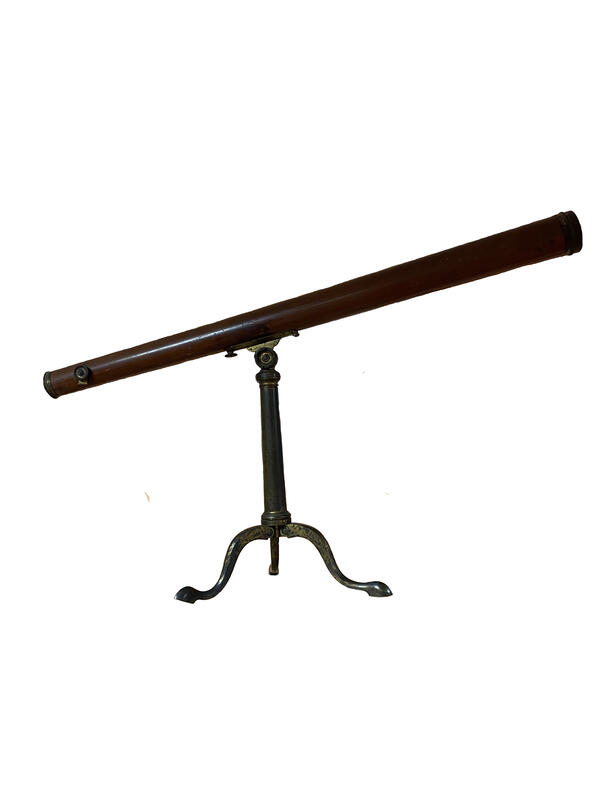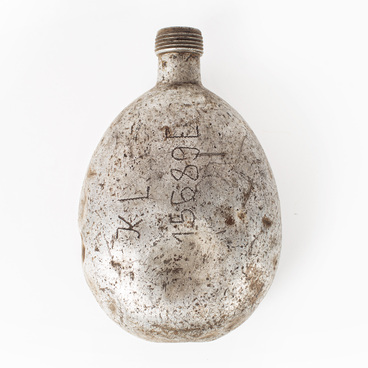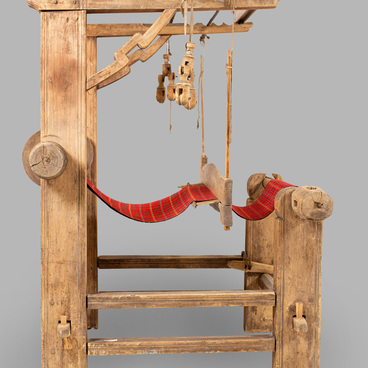An astronomical telescope is a device that is designed for observing celestial bodies. It was created in the early 17th century by several inventors at once. The term “telescope” was coined in 1611 by a Greek mathematician for one of Galileo’s instruments, although Galileo himself named it a microscope.
There are several types of telescopes that use a mirror, a lens, or a combination of the two to form an image. Initially, high-quality glass and rock crystal were used for making lenses. Nowadays, engineers assemble extremely large telescopes with a diameter of 30 meters.
This wooden optical telescope on a stand used to belong to Alexander Leonidovich Yashchenko, a Russian scientist, naturalist, geographer, traveler, and teacher. He was born in Tatarstan in 1868. His father was a lawyer and a member of the “Narodnaya Volya” political organization. Alexander Yashchenko became fascinated with science at an early age, and as a student at St. Petersburg University, he went on his first expedition which he described in his “Report on a Trip to Russian Lapland in the Summer of 1887”. Later, Yashchenko was awarded the silver medal of the Imperial Russian Geographical Society for his publications about the Sámi.
Alexander Yashchenko traveled across Central Asia, Western Europe, and Australia. He studied the latest research methods in zoology and geography, lived at the Naples Zoological Station, and was the custodian of the zoological cabinet of St. Petersburg University. He translated “Animal Life” by Alfred Brehm, published hundreds of academic papers, and popularized science. Alexander Yashchenko was listed in the Russian Biographical Dictionary and the Brockhaus and Efron Encyclopedic Dictionary.
Alexander Yashchenko actively engaged in enlightening the youth, talked about the amazing world of flora and fauna, and taught at schools, gymnasiums, military academies, and institutes for noble maidens. He also wrote the book “Crunch. Memoirs of a Naturalist Rat”, which became one of the most popular books in early 20th-century Russia.
The scientist was acquainted with and corresponded with Maxim Gorky, Nikolay Gumilyov, Ivan Bunin, and Rudyard Kipling. In 1937, while working as a geography teacher in the town of Sergach, Nizhny Novgorod Region, Alexander Yashchenko was arrested at the age of 69, accused of espionage, and shot.
There are several types of telescopes that use a mirror, a lens, or a combination of the two to form an image. Initially, high-quality glass and rock crystal were used for making lenses. Nowadays, engineers assemble extremely large telescopes with a diameter of 30 meters.
This wooden optical telescope on a stand used to belong to Alexander Leonidovich Yashchenko, a Russian scientist, naturalist, geographer, traveler, and teacher. He was born in Tatarstan in 1868. His father was a lawyer and a member of the “Narodnaya Volya” political organization. Alexander Yashchenko became fascinated with science at an early age, and as a student at St. Petersburg University, he went on his first expedition which he described in his “Report on a Trip to Russian Lapland in the Summer of 1887”. Later, Yashchenko was awarded the silver medal of the Imperial Russian Geographical Society for his publications about the Sámi.
Alexander Yashchenko traveled across Central Asia, Western Europe, and Australia. He studied the latest research methods in zoology and geography, lived at the Naples Zoological Station, and was the custodian of the zoological cabinet of St. Petersburg University. He translated “Animal Life” by Alfred Brehm, published hundreds of academic papers, and popularized science. Alexander Yashchenko was listed in the Russian Biographical Dictionary and the Brockhaus and Efron Encyclopedic Dictionary.
Alexander Yashchenko actively engaged in enlightening the youth, talked about the amazing world of flora and fauna, and taught at schools, gymnasiums, military academies, and institutes for noble maidens. He also wrote the book “Crunch. Memoirs of a Naturalist Rat”, which became one of the most popular books in early 20th-century Russia.
The scientist was acquainted with and corresponded with Maxim Gorky, Nikolay Gumilyov, Ivan Bunin, and Rudyard Kipling. In 1937, while working as a geography teacher in the town of Sergach, Nizhny Novgorod Region, Alexander Yashchenko was arrested at the age of 69, accused of espionage, and shot.




